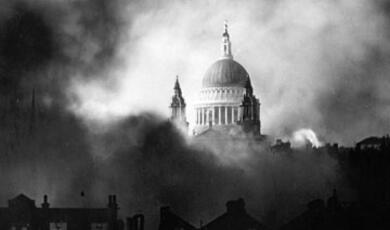An Infernal Spark: Drink, Addiction and Disease
Share
- Details
- Transcript
- Audio
- Downloads
- Extra Reading
Addiction is a familiar feature of contemporary society. Not only do we have access to numerous substances linked to dependency, but we apply the term ‘addiction’ to an increasing array of other activities: shopping, eating, gambling and so forth. However, there remains deep uncertainty as to what addiction is, how it develops and how it should be tackled. Most strikingly, the question of whether addiction is a kind of disease remains unresolved – something which has significant implications for how addiction and addicts are viewed.
This is the first in a series of four 'Mondays at One' lectures, From Gin Lane to the Band of Hope. Other lectures in the series are as follows:
The Gordon Riots of 1780: London in flames and a nation in ruins
Cannabis Britannica: The rise and demise of a Victorian wonder-drug
"The fangs of the serpent are hid in the bowl": The Temperance Movement
Download Transcript
4 March 2013
An Infernal Spark:
Drink, Addiction and Disease
Dr James Nicholls
We live in a world that is fascinated by addiction: one in which our popular culture is suffused with references to addiction. Indeed, our cult of celebrity is strangely entwined with a fascination about addiction amongst the rich and the famous.
But we also tend to see addiction, and inducements to addiction, all around us. We apply to the term to an array of activities, far beyond the use of drugs, or alcohol or tobacco. We can be addicted, it seems, to all sorts of things: from love to unhappiness and pain.
But, in what is a measure of the concept’s ubiquity we also use the term more light-heartedly. Are you a shopaholic? A chocoholic? Or maybe a Harry Potterholic…?
We also theorise about the roots and sources of addiction. Do they lie in our childhood? In the substances we consume? In the things we do? Do they lie in our brains – as an increasingly influential biomedical orthodoxy tends to argue.
And what is an addict? Can we stop being addicts – do we recover, or are we always in recovery?
What are the stories addicts tell? And why do those stories so often follow a similar trajectory, from experimentation to compulsion and desperation and, ultimately, to either death or redemption?
Is that really the way things are? Is all addiction the same, or is it a name we give to an array of activities that share some common features, but which are also different: subject to pathways that cannot be narrowed down to familiar tales of decline and recovery?
It’s said that the poet Dylan Thomas once remarked ‘An alcoholic is someone you don’t like, who drinks as much as you do’. That was said by someone with a sharp tongue and a difficult relationship with alcohol; but is there a kernel of truth in his claim that addiction lies in the eye of the beholder, rather than existing as some Platonic form of which every individual addict is simply a manifestation?
Well, I’m sorry to say I’m not going to answer any of those questions today – so my apologies. They are far bigger questions than I can resolve, and we’ll no doubt keep debating them for a long time yet.
Instead, what I’d like to do is take you on something of a whirlwind tour of the emergence – or, as one famous historical study put it – the ‘discovery’ of addiction in modern Western culture.
That is, I want to take you back to a time when the idea of addiction, as we know it, first began to emerge. An era – hard to imagine today – when addiction, addicts and addictive thinking weren’t any part of our cultural fabric.
To be clear: I don't mean that the behaviours we describe under the term ‘addiction’ today didn’t exist beyond the starting point of this talk. Nor do I mean that compulsive forms of consumption and behaviour are unique attributes of what we can loosely term ‘modernity’ (though some would argue as much). Instead, I will just look at some of the ways in which our understanding, response to and representation of those behaviours are distinct, and have a story that can be traced and situated in some specific historical and cultural contexts.
When historians trace the emergence of addiction, there’s one overarching theme that regularly appears: that the modern concept of addiction represents, in a sense, the secularisation and partial medicalization of our understanding of behaviours that previously were construed simply as sinful.
We’ve always had a sense of the drunkard – we’ve always had people who drink more than is good for them – but we’ve not always had the sense of the alcoholic, who suffers from a disease beyond his, or her, control.
The same goes for other substances as well, though, alcohol is – without doubt - the substance around which these ideas first crystallised. Almost all of the early writing that deals with the habitual consumption of substances talks about alcohol (though tobacco, coffee and even tea are occasionally described along these lines). It was only much later that we began to see in any systematic way opium, cocaine and other drugs as similarly moreish and habit-forming.
This notion of a linear historical movement from sin to disease is, of course, a simplification. I don’t think we can speak of having moved entirely from an era of moral condemnation of habitual drinking to an era of non-moralising medicalization: rather that, non-moralising perspectives on habitual behaviours emerged around 300 years ago, that they were developed primarily in medical discourse, but that the tension they established was never resolved, and remains unresolved.
For we still seem to be uncertain: Who is to blame for addiction? The addict, the substance, the disease, or something else?
And that use of the term ‘the addict’ raises another important issue. What does it actually mean to be ‘be’ an addict? And is the condition of being ‘an addict’ one which supersedes that of being a rational, morally responsible individual?
The historical development of the word ‘addict’ is itself instructive here.
The word ‘addict’ has its etymological roots in the Latin verb ‘addicere’ – meaning ‘to assign’. In Early Modern English writing, to addict was used generally as an active verb, albeit a rather peculiar one – implying a voluntary loss of liberty.
From the 18th and into the 19th century we see the word being used more commonly as a passive verb: in which individuals become addicted to substances. In becoming a passive verb, the agency shifted from the subject towards the substance or activity. An individual could, willy-nilly become addicted through the influence of an external agent.
From the early 20th century, we see the word being used as a noun: as in ‘he became an addict’. The first use of the phrase ‘drug addict’ in the Times, for instance, is from January 1920; its first use in the BMJ is from slightly earlier, in 1910. But from around 1920 onwards, the use of the word ‘addict’ as a noun starts to be used widely.
In becoming a noun, we see the development of the notion that to be an addict is an all-encompassing state of being (a notion developed most fully by Alcoholics Anonymous in the 1930s). The addict is a type of person: a person who becomes addicted to things, and who – from the point addiction manifests itself onwards (or even before being exposed to a substance) – is overwhelmingly defined by their condition.
When looking at the origins of modern ideas about addiction, one common way to trace developments is to look for places where drinking – long described as a sin or vice in religious discourse, starts to be described as a disease.
Now, allowing for the fact that the use of the word disease today and in Early Modern England was not exactly the same, it is still interesting to notice the emergence of language such as this.
Maynwaring, it should be said, is talking specifically about drunkenness here. However, he argues that drunkenness is a state of being pursued by those who drink ‘neither for the good of the body, or the mind, but to stupefy and drown both’. Hence the ‘disease’ of being drunk is associated with a type of person who craves this state.
Maynwaring is only illustrative here, and he was by no means the first doctor to describe habitual drinking in such terms – indeed, the French physician Jean Mousin wrote a book on the physiology of drunkenness some decades earlier (Discours de l’yvresse et yvrongnerie, 1612).
We should also note that drunkenness was described analogously as a disease by a number of seventeenth century preachers (as the historian Jessica Warner and others have shown). However, in seeking to analyse the physiology of alcohol, and understand how this may produce habituation, Maynwaring represents an example of a more general trend.
What might have motivated this shift towards a more medical analysis of drunkenness?
Changes in scientific (and philosophical) discourse were of course important – a new focus on how the body and mind interacted led, perhaps inevitably, to the question of alcohol.
Not least because alcohol plays havoc with Cartesian dualism: if body and mind are separate – as the 17th century philosopher René Descartes influentially claimed - then how come a liquid, poured into the stomach, can turn the mind inside out? That was a question (as Roy Porter, Anya Taylor and others have noted) which taxed a number physicians in 18th century England.
Other changes mattered, too. The spread of gout concentrated medical minds on the role of alcohol in physical harm, and the methods by which sufferers could be weaned from their habitual consumption.
Christianity, of course, always had an eye on alcohol. But, radical Protestantism was much more wary of the carnivalesque swerves into sinfulness that drunkenness signified. In 17th Century England, we see numerous religious sermons against drunkenness – though most construct it in fairly conventional terms as a sin: a form of gluttony, idleness and bestialisation.
In 1673, the theologian Richard Baxter’s published his Christian Directory, which contained a lengthy chapter entitled ‘Directions against drunkenness’. In some ways, it is similar to the work of other moralists such as William Prynne, but it contains a far more elaborate discussion of the causes and cures of drunkenness than most of his contemporaries. In addition to discussing idleness, sin and bestiality, Baxter considers issues such as lack of medical knowledge on the decision to drink, the power of denial in exacerbating drinking behaviour, and the role of social pressure in drawing individuals into the habit of drunkenness.
Baxter also proposes an array of methods for weaning oneself off drink. In addition to prayer and rigorous moral self-analysis, he proposes publicly admitting one’s loss of control over drinking; drinking wormwood after alcohol as a form of aversion therapy; avoiding places associated with drinking and so forth.
Baxter, ultimately, construes habitual drinking as a sin, but his work is a striking example of how – by the late 17th century – even religious thinkers started to try and penetrate the mind and the soul of habitual drinkers in ways we really hadn’t seen before.
If drunkenness was a concern for 17th century religious writers, the eighteenth century saw – in Britain especially – a dramatic increase in wider social and political concerns over the effects of alcohol.
The fashion for hard drinking among social elites not only exacerbated the problem of gout, but led some elite medics to question their own relationship with the bottle. The celebrated physician George Cheyne, for example, suffered enormously as a consequence of his own engagement in elite drinking behaviours (he describes falling in with ‘bottle companions’ in his youth, but suffering terrible health effects as a result). Partly because of this, Cheyne built a study of alcohol’s habit-forming properties into his own very influential work on health and diet.
Cheyne is one of the first medical writers to consistently suggest that total abstention from alcohol is not only possible, but advisable. In fact, there’s an interesting (and often overlooked) development of medical writing on total abstinence in England in this period.
At the same time, drinking among the new urban poor triggered widespread anxiety – numerous Acts of Parliament were passed between 1729 and 1751 seeking to tackle gin consumption. Most notoriously, an Act of 1736 sought to, effectively, prohibit the sale of gin through the imposition of exorbitant licensing fees (it was a disaster, and was repealed in 1743).
Campaigners for gin legislation argued that distilled spirits produced, in Henry Fielding’s words ‘a new kind of drunkenness’. Indeed, the gin campaigners of 18th century England were the among first to use the language of uncontrollable habit as a justification for coercive legislative action – up to and including outright prohibition. Habitual spirit-drinking seemed to decimate the will, destroy reason, and (what many commentators were most concerned about) destroy the moral compass – and, indeed, economic function – of women.
Eighteenth century Britain, then, saw something of an explosion in writing on alcohol and its habit-forming effects. Scientists, physicians and social commentators chipped in with treatises and pamphlets calling for everything from gin prohibition to the use of aversion therapies as ways of tackling this new and frightening problem.
In becoming the object of a political and medical gaze, however, habitual drinking also became something of an object of fascination. What was it, people began to ask, that made the drunkard incapable of reason? What did it tell us about the limits of human rationality?
This was something that was commented upon by a number of Georgian physicians and scientists – including Erasmus Darwin, David Hartley and George Cheyne. It was also something that fascinated the Romantics – for whom drinking and, of course, opium use, became something of a metaphor for alienation, introspection and all-round interestingness. (It's worth noting here that Thomas De Quincey’s seminal book Confessions of an English Opium-eater (1821) was published some seven years after Charles Lamb wrote a witheringly biographical essay entitled ‘Confessions of a Drunkard’, which explored many of these issues.)
The drunkard, then, was evolving from a figure of ridicule and simple moral condemnation to a subject of philosophical fascination, medical speculation but also legislative action.
In America, in 1784, the Surgeon General Dr Benjamin Rush weighed in with a pamphlet that has often – quite wrongly, in my view – been described as the first depiction of addiction in modern terms. In reality, Rush’s pamphlet was both derivative and rather confused (influenced by, among others, the British physician William Cadogan – especially his work on gout). However, the ‘moral thermometer’ which Rush introduced in this study was an original, and rather wonderful, contribution to the debate. It shows quite graphically how Rush struggled to tease apart the moral and the medical where habitual drinking was concerned. Habitual drinking was sin – but sin that could be calibrated on a scientific scale.
Twenty years after Rush first published his pamphlet the British navy surgeon Thomas Trotter produced a much lengthier, and considerably more complex, study of habitual drinking. For Trotter, the disease of drunkenness was specifically a psychological illness, brought on not by sinfulness, nor (importantly) by simple exposure to alcoholic drinks, but by exposure in the context of a kind of emotional malaise whose roots could lie in loss of self-esteem, ageing, anxiety or a number of other factors. Trotter’s proposed treatment, then, was not prayer or piety, nor simple abstention, nor was it the prohibition of alcohol; it was a kind of moral counselling in which treating the motivation to drink was at least as important as treating the act of drinking itself.
As the 19th century progressed, medical writing on alcohol became more widespread. In Sweden, the physician Magnus Huss began to develop a distinctly medical model of alcoholism (it was Huss who coined the term in 1849). Huss also distinguished between chronic and acute forms of alcoholism. In France, shortly afterwards, the physician Benedict Morel explored what he called ‘dipsomania’. The interesting thing about Morel is that he suggested the condition of dipsomania preceded exposure to alcohol. That is, it was a kind of mental disease that was triggered (rather than caused) by the substance.
That idea (that the propensity for dependency was a pre-existing condition) would be taken up and developed in Britain by medics such as Norman Kerr who, in 1884, established the Society for the Study of and Cure Inebriety (now the Society for the Study of Addiction). Kerr insisted that inebriety was ‘a diseased state of the brain and nervous centres, characterised by an irresistible impulse to indulge in intoxicating liquors or other narcotics, for the relief which these afford, at any peril.’ Kerr, however, still struggled to pin down how the disease of inebriety was distinct from the vice with which it was associated.
Kerr’s Society was, inevitably, linked to the Victorian temperance movement – a movement which, although broad-ranging and diverse, held as one of its fundamental principles that alcohol was a drug that could cause, or trigger, or exacerbate, addiction. Indeed, it was on these precise grounds (that alcohol was a habit-forming substance, unlike any other commodity) that prohibitionists justified state intervention to ban the sale of alcohol – just as their forbears had done during the gin craze. And it was also on these grounds that medical authorities called for more concerted treatment of inebriates, alcoholics and dipsomaniacs.
In 1858, the Scottish Physician Alexander Peddie published an article calling for the establishment of asylums specifically for the treatment of drunkards. These asylums, he argued, should be used for both voluntary committal and rendition by the courts. His reason was that habitual drunkards were so incapable of control, that to expose them to normal legal channels was unjust.
Twenty-one years later (and after Peddie’s ideas has been taken up in America) a Habitual Drunkards Act was past in the UK mandating the establishment of inebriate asylums. These, however, could only contain people who had volunteered to enter, and – because they were private – they were expensive to use. They, therefore, relied on that small population of wealthy individuals willing to sign away their own liberty on the grounds they were self-declared dipsomaniacs. Not an enormous population. By 1891 there were just seven retreats with sixty-two inmates.
However, the idea of incarceration-based treatment remained powerful, and in 1898 Peddie’s original proposal – to include committal by the courts – was established under an Inebriates Act that allowed the establishment of state reformatories. Here, people could be committed if they were convicted of serious crimes and had a record of drunkenness, or if they were convicted of minor alcohol-related offences more than four times in a year.
By 1903 there were around 20 private asylums and two state reformatories – of which the majority of inmates were women. Between 1898 and 1903 876 women were committed to reformatories, compared to just 136 men. Most women were committed on grounds of child neglect or prostitution. The reformatories, it has been argued, provided less a means of treating dependency than an extension of the means by which criminal behaviours – especially among women, and including non-criminal forms of sexual transgression – could be policed.
When a Select Committee of 1872 had proposed the establishment of inebriate reformatories, the Times had written that they threatened to ‘treat vice as disease, and punish it as crime’. In reality, they came to be an extension of the penal system, only one in which the concept of inebriety allowed the policing of transgression to be posited as therapy. Furthermore – as in Georgian England – ideas of addiction and ideas about gender-specific moral norms overlapped significantly.
The inebriate reformatories provide an appropriate end point for today’s talk: a moment when the idea of addiction, treatment, punishment and recovery came together in a piece of rather extraordinary, but also short-lived, legislation. They fell into abeyance after WWI, at around the same time that the Victorian temperance movement – with its grand project of placing alcohol control at the heart of all social policy, also fell into decline.
The mid-20th century saw a waning in political concerns over alcohol (alongside – and not unrelated to – a dramatic fall in consumption) and it saw addiction drawn away from the broader social and political questions that had previously made it key to arguments for everything from prohibition to the creation of inebriate reformatories. For much of the 20th century, psychiatry dominated addiction discourse – which, on the one hand, intensified the subjection of addicts to specialist observation and treatment, but which also drew them away from the political gaze.
The definition and treatment of addiction in the 20th and 21st centuries – encompassing as it does not only a newer panoply of drugs, but an increasing array of non-substance related behaviours – is not one I’m going to address, but it is, again, a fascinating story of how certain behaviours come to be defined according to expert frameworks, but also how wider social concerns and obsessions are expressed through the figure of the addict: a person who seems to exist both on the edges, and at the heart, of modern culture.
We have still not resolved the questions about addiction, but point of this talk is, if anything, to illustrate how the history of the subject tells us as much about culture as about physiology or psychology. And as much about the dynamics of social change, politics and power as it does about the mysterious capacity of humans to lose their ability to control the things they do.
© Dr James Nicholls 2013
This event was on Mon, 04 Mar 2013
Support Gresham
Gresham College has offered an outstanding education to the public free of charge for over 400 years. Today, Gresham plays an important role in fostering a love of learning and a greater understanding of ourselves and the world around us. Your donation will help to widen our reach and to broaden our audience, allowing more people to benefit from a high-quality education from some of the brightest minds.


 Login
Login







